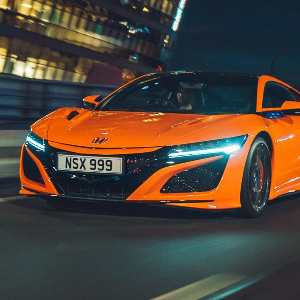
We loved our time with the latest fabric-roof MX-5, but what about the also-refreshed metal-roof Mazda MX-5 RF? A UK drive gave us the answer.
PROS:
+ Still superb to drive
+ Better high-speed quiet
+ Still-decent boot space
CONS:
- Pricier than standard MX-5
- Tall adults might be cramped
- Low roof operation speed
Verdict: Thanks to its clever packaging and thus minute weight gain, the Mazda MX-5 remains a joy to drive, more hushed on the motorway and just as practical. It'll cost you more to buy though and the lanky among us will still want a bit more seat adjustment.
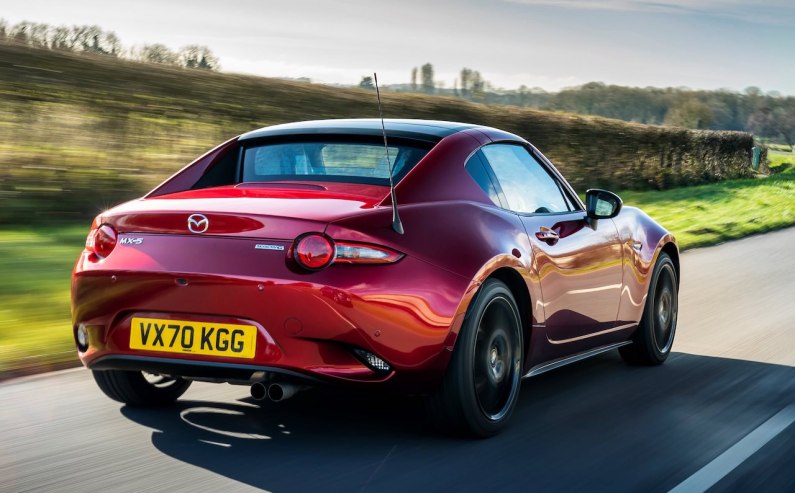
2021 Mazda MX-5 RF review: the five-minute read
We feel sorry for the Mazda MX-5 RF. Why? Because soon enough, you won't be able to buy a new one in the UK as we know it. Whatever MX-5 after 2030 to our shores will need to be electric, and as cars go, the extremely light and not particularly powered MX-5 has had a relatively minimal effect on the planet.
Plus, a small electric two-seat sports car is a bit of a head-scratcher for a car designer. Batteries are heavy, so it'll need to have a small one – but then you don't have much range. Oh, and there's no engine noise, nor an engaging manual gearbox. Hmm.
But while they're working that out, let's focus on what we have now. An updated-for-2021 MX-5 with a metal roof, not a fabric one. It's designed to be every bit as good to drive, but easier to live with and now more high-tech and high-quality.
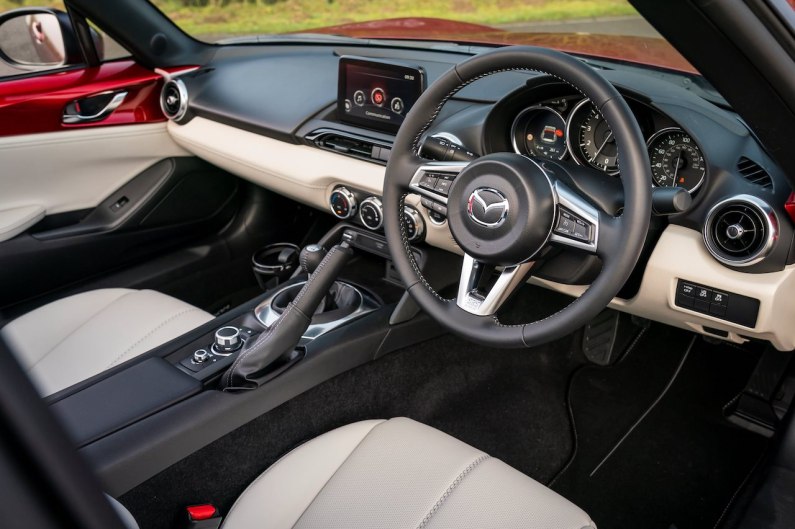
As before this facelift, the RF continues to walk its own path. Sure, cars like the upcoming Toyota GR86 and Porsche Boxster are similar in some ways but very different in others.
Regardless, we still the MX-5 RF still looks superb on the road. Its squinty headlights, almost grinning grille, humped front arches and flowing flanks give it a purposeful look with it being overly aggressive. Our range-topping RF GT Sport Tech car has a new black roof for 2021, but keeps a set of lovely dark BBS alloys.
Inside the GT Sport Tech has done away with its old burgundy leather trim and replaced it with the light stone leather you see above instead. It feels genuinely plush at this level, but even entry-level RF's still feel solidly made from quality materials, helped by a simplistic design that has kept it feeling fresh despite being launched in 2015.
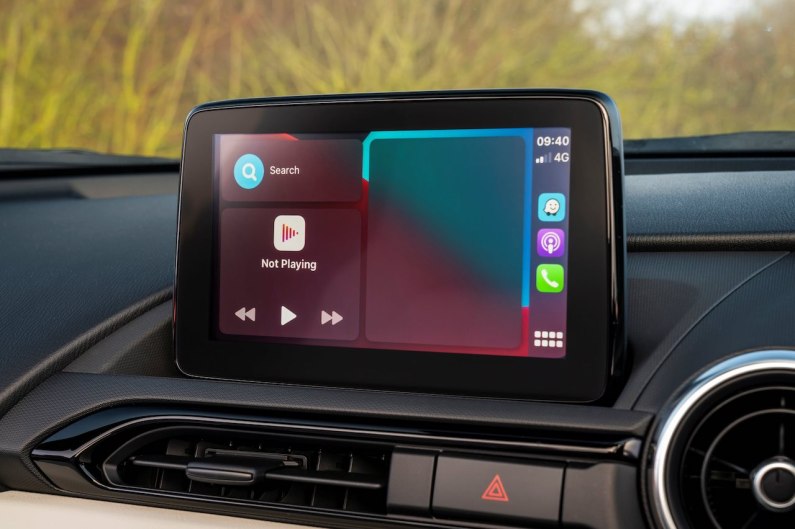
Starting to feel a little longer in the tooth is the RF's infotainment system, which has a fairly small screen by today's standards that is also visually less high resolution than the best around. However, its simple menus and rotary dial operation mean it still holds its own, plus wireless Apple CarPlay and Android Auto are now standard for 2021.
The RF's interior dimensions haven't changed, so there's still enough room for two adults to sit comfortably too. That said, those beyond 6ft 2in or so will start to wish there was more fore and aft seat adjustment, even if their head will still be well clear of the roof. Storage inside is minimal, too.
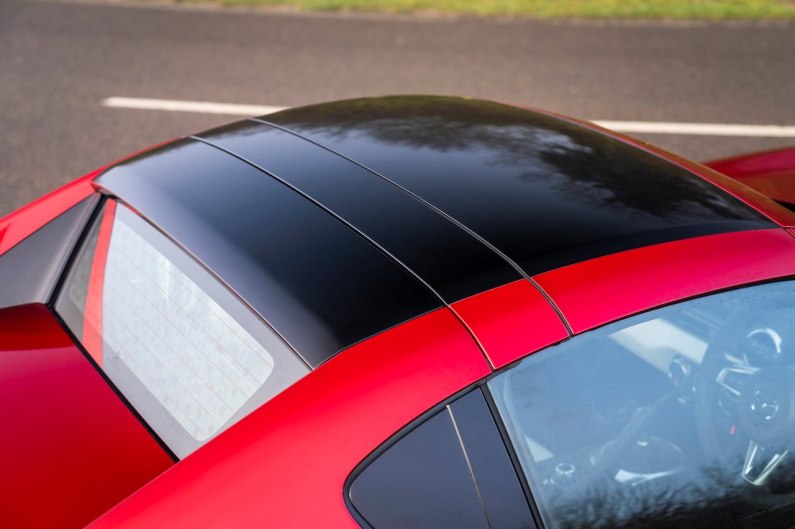
But, despite having to store its metal roof somewhere, some ingenious folding design means the RF's boot is barely any smaller than the standard MX-5's. At 127 litres it's by no means estate-like but will handle bags for a couple on a long weekend away no problem.
And on the subject of that folding roof, here it's done with a button rather than your own arms. The trouble is, at around 12 seconds for the RF to tuck its roof away, it actually takes a fair bit longer than doing it manually, plus you can't be going any more than 6mph. That's really quite slow versus other metal-roof open tops and essentially means stopping the car to do it.
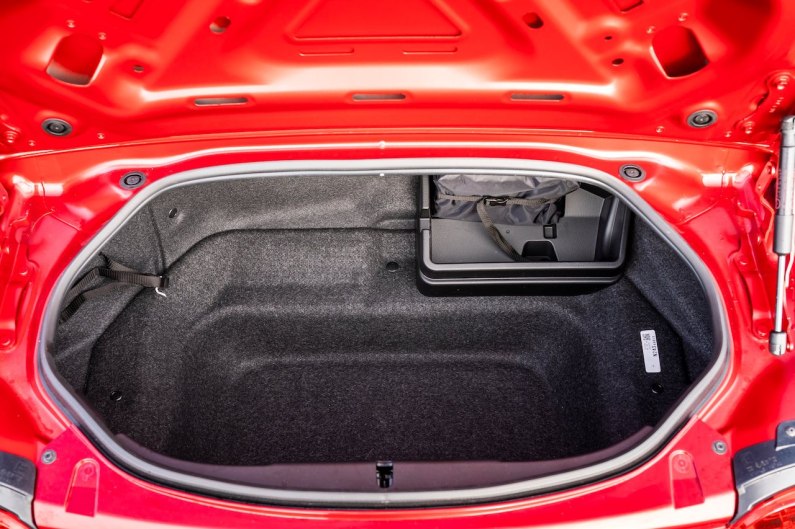
Still, once it's down, you'll be having a blast. The RF comes with either a 132hp 1.5-litre or 184hp 2.0-litre petrol engine, both without a turbocharger, both sending their power to the rear wheels and both via a six-speed manual gearbox as standard. An automatic gearbox is available with the 2.0-litre, but it seems a shame in a car as good to drive as this.
The RF is around 40kg heavier than the fabric-roof standard MX-5, something you never notice on the road. It's slightly slower in a sprint to 62mph from a standstill than the lighter car, but, really, how often are you doing that? In gear and on the move the difference is barely noticeable, and both engines still love to be revved while sounding addictively raspy when pushed.
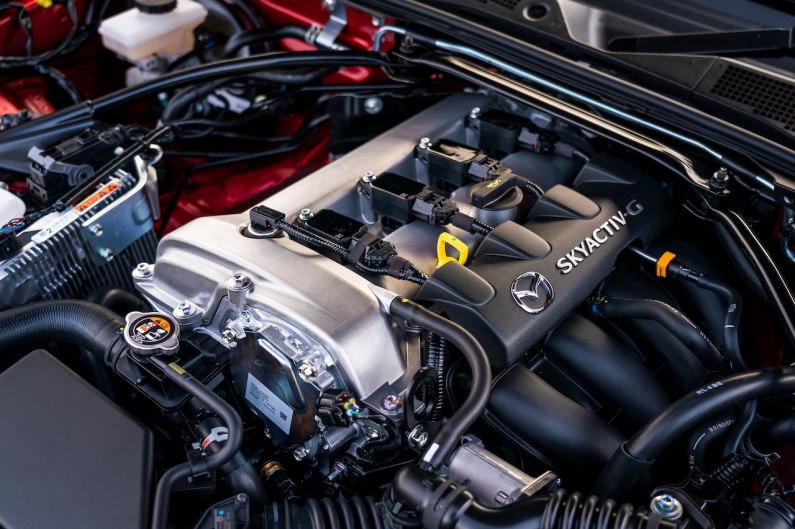
But let's be honest, straight-line speed isn't really isn't the point. The point is whether or not the RF goes around corners as sweetly as the standard MX-5. Which, it very much does by the way.
It steers with the same wonderful weight and precision, shows the same eagerness to turn into bends and is every bit as balanced through them. Plus, that brilliant six-speed manual gearbox with its snappy movement and short throw makes driving the RF all the more engaging.
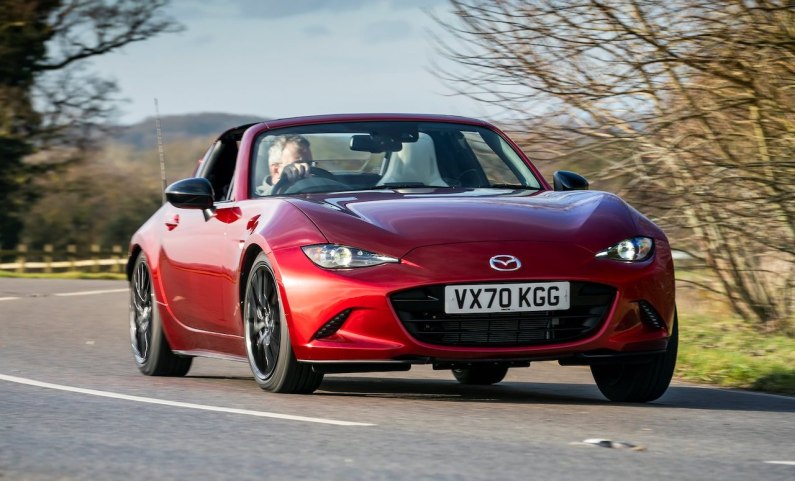
Go for a 2.0-litre manual model in Sport Tech trim or above and you also get a limited-slip differential, stiffer Bilstein suspension and a front strut brace for a more responsive front end. Our car was equipped so and felt genuinely livelier as well as more efficient at getting its power to the road when exiting slower corners in the wet.
The trade-off is a slightly firmer experience at lower speeds in town that the non-sports suspension models don't suffer, although it's far from rock hard and the majority of MX-5 buyers will only see it as a positive.
Otherwise, the RF is a very easy car to live with. Its small size and decent visibility make it a great town car, while its metal roof makes motorway driving a good bit quieter than in the standard MX-5. Roof down, the RF does a better job of keeping buffeting in the cabin to a minimum too.
For great MX-5 deals click here
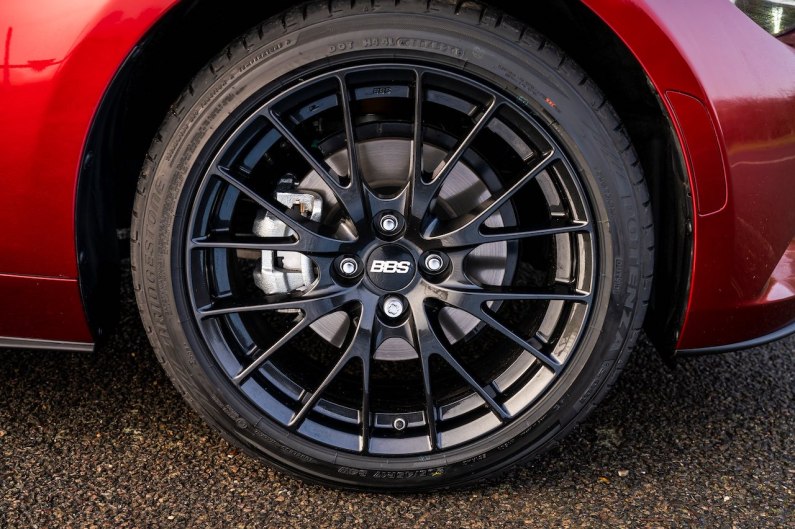
Which leaves the price. The RF is between around £1000 and £3000 more expensive than the standard car as you climb the range, which certainly can't be ignored and will make noticeable differences to finance plans too.
That said, there are real advantages to buying an RF that are well worth this extra. If you plan to use your MX-5 on the motorway quite a bit and value that peace and quiet, it's the better option without compromising on everything else that's great about this Japanese sports car.
